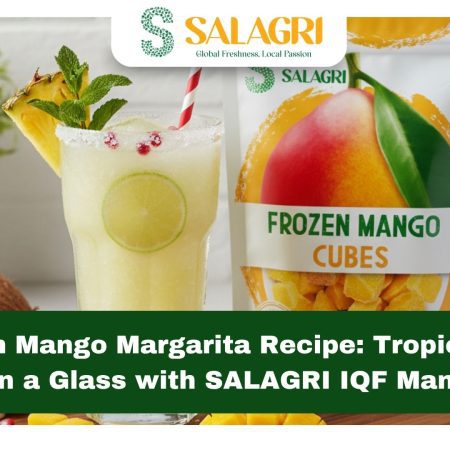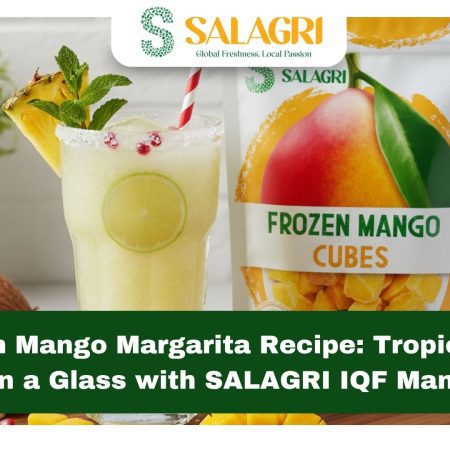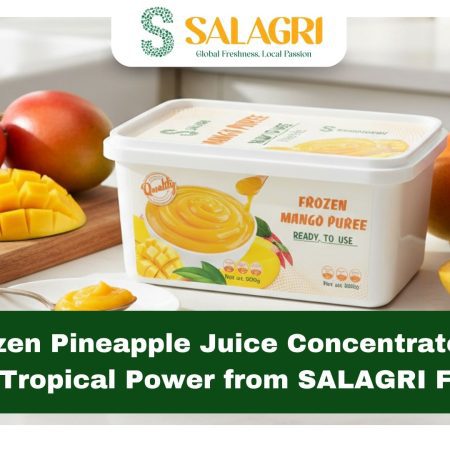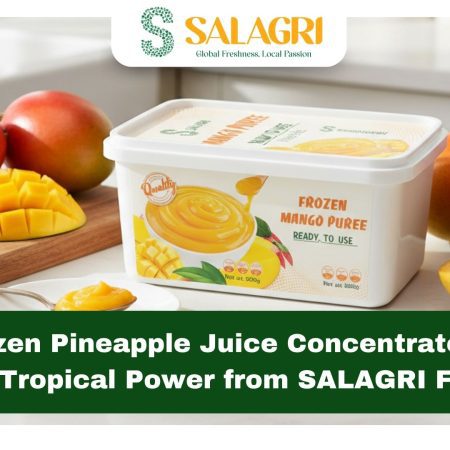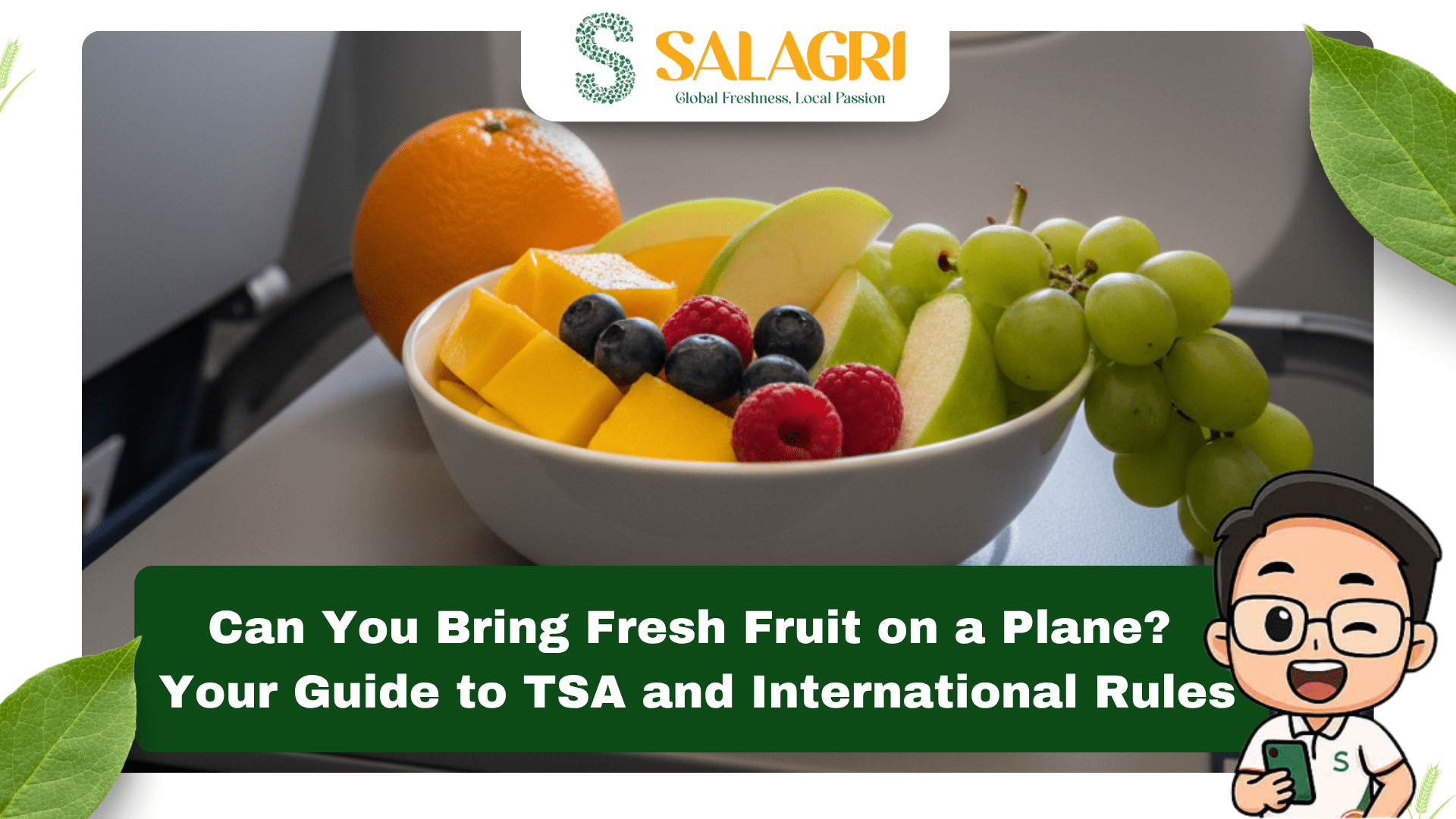
Traveling with your own snacks can make a long flight much more enjoyable, but when it comes to fresh fruit, the rules can get tricky. If you’re asking, “Can you bring fresh fruit on a plane?” the answer depends on where you’re flying, what type of fruit, and how it’s packed. Fresh fruit is a healthy, convenient option to curb hunger during travel, but strict regulations—especially for international flights—require careful planning. In this article, we’ll break down the dos and don’ts, explore why frozen fruit from SALAGRI Fruit is a fantastic alternative, and share tropical smoothie recipes to enjoy post-flight using their premium frozen fruits. Whether you’re a frequent flyer or planning a one-off trip, this guide will help you navigate the rules and keep your snack game strong.
Understanding TSA Rules: Can You Bring Fresh Fruit on a Plane?
For domestic flights within the continental United States, the Transportation Security Administration (TSA) allows fresh fruit in both carry-on and checked luggage, as long as it’s solid and not a liquid or gel. This means whole fruits like apples, bananas, or oranges are generally fine. However, there are a few caveats:
- Preparation: Fruits must be properly sealed to prevent leaks or odors. Use airtight containers or resealable bags to avoid messes that could flag security checks.
- Screening Process: Be ready to place fruit in a separate bin at security for inspection. This might add a minute or two, so pack thoughtfully if you’re in a rush.
- Special Cases: If traveling from Hawaii, Puerto Rico, or the U.S. Virgin Islands to the mainland, most fresh fruits are banned due to agricultural pest risks. For example, mangoes or pineapples from Hawaii are typically prohibited to prevent invasive species like fruit flies from spreading.
For international flights, restrictions are stricter. Many countries, including the U.S., ban fresh produce to protect local ecosystems from pests and diseases. For instance, bringing an apple into Australia or New Zealand could result in hefty fines—up to $420 AUD in some cases, as noted in a 2025 Australian government travel advisory. Always check the destination country’s customs regulations before packing fresh fruit.
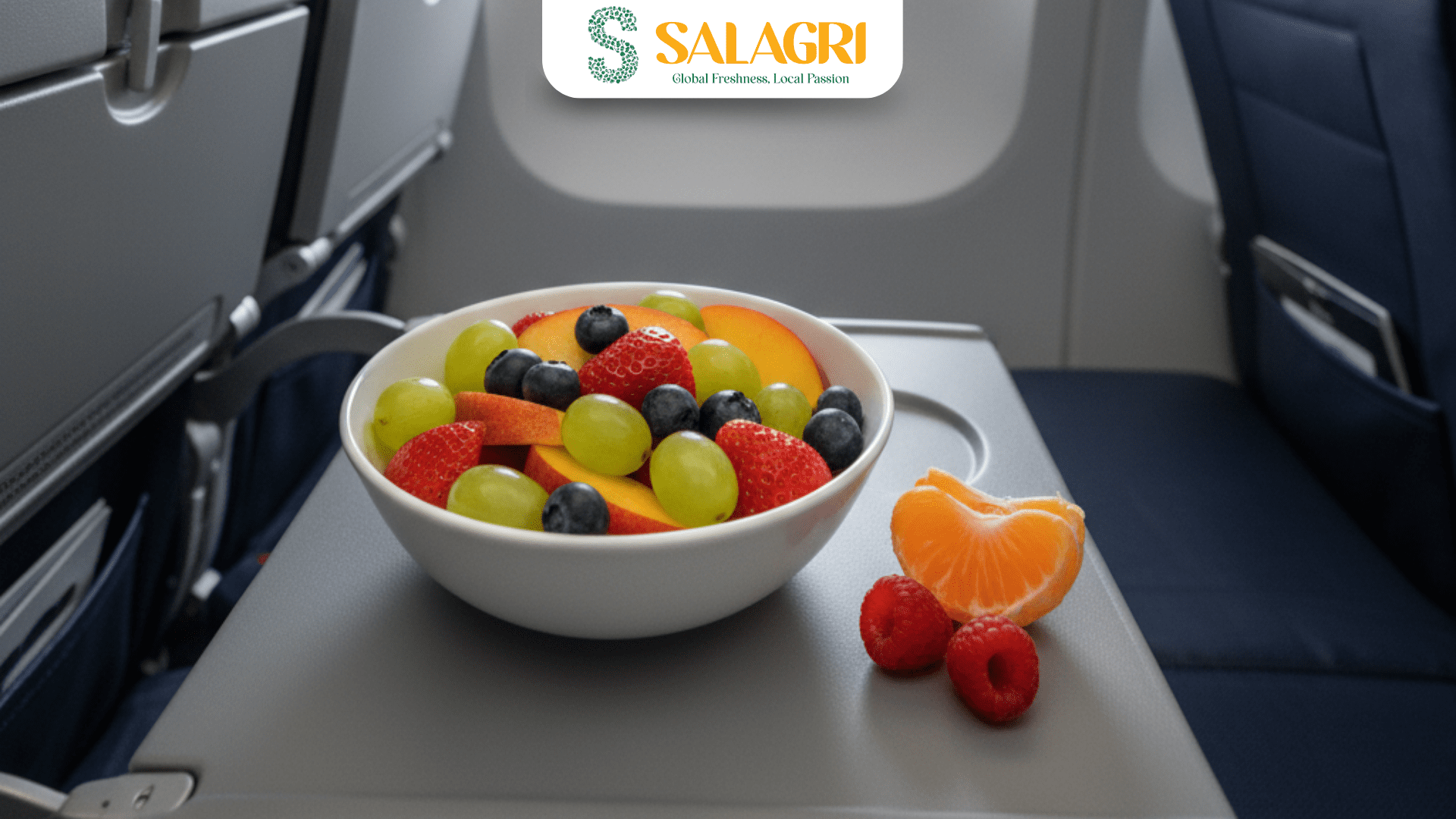
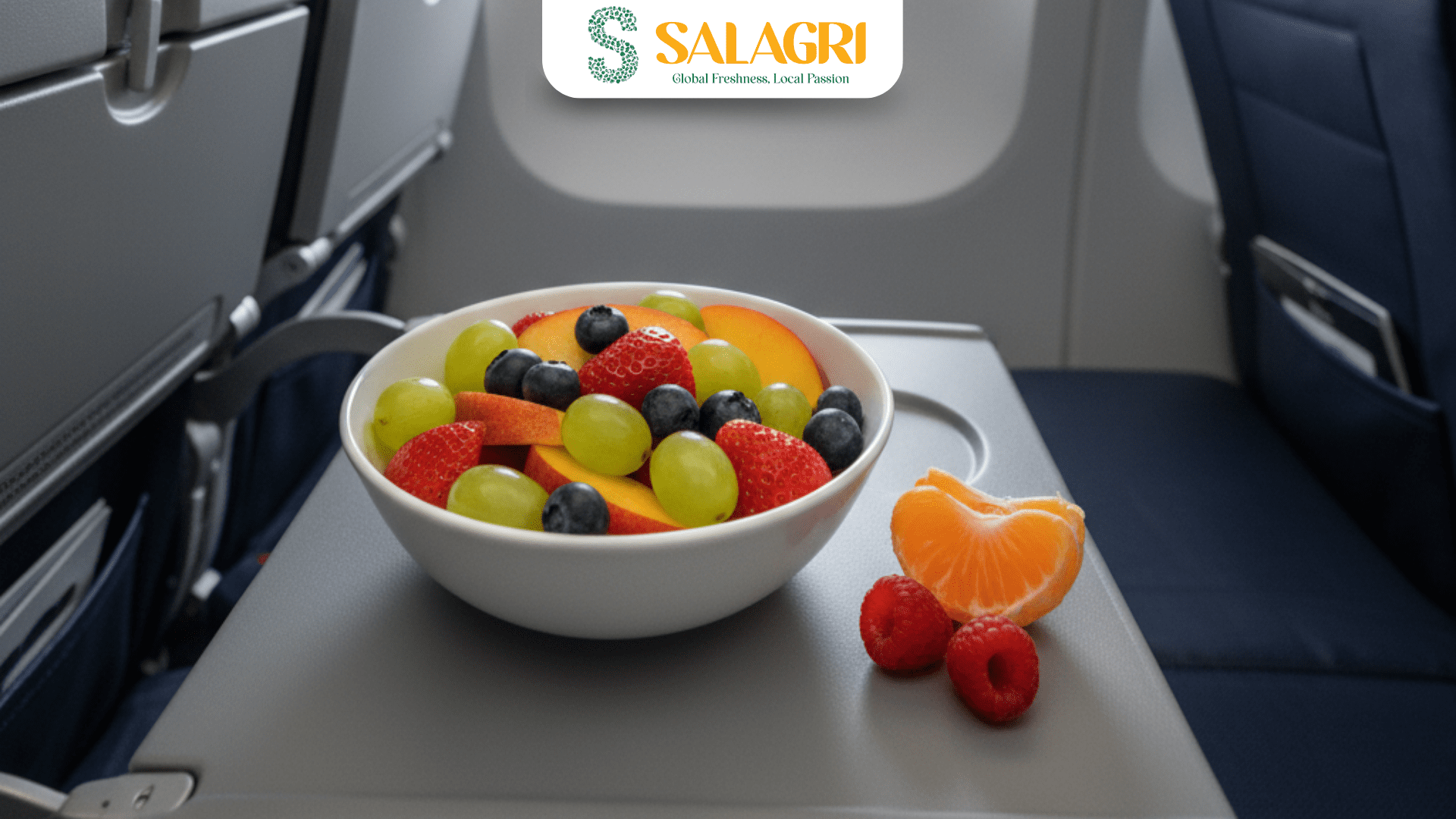
Why Frozen Fruit Is a Great Travel Alternative
Fresh fruit is tasty but perishable and risky for international travel. Enter frozen fruit—a versatile, travel-friendly option with major benefits:
- Long Shelf Life: Frozen fruit lasts months (up to 24 months at -18°C), making it ideal for travel prep or post-trip meals without spoilage concerns.
- Nutrient-Packed: Flash-freezing locks in vitamins, minerals, and antioxidants. A 2025 study from the American Frozen Food Institute found frozen fruit retains up to 95% of its nutritional value, sometimes outperforming fresh fruit stored for days.
- Convenience: Pre-washed and pre-cut, frozen fruit is ready for smoothies, snacks, or desserts once you reach your destination. No peeling or chopping required.
- Year-Round Access: Enjoy tropical fruits like mango or dragon fruit anytime, anywhere, without relying on seasonal availability.
- Cost-Effective: Reduces waste and often costs less than out-of-season fresh produce, especially for exotic varieties.
While you can’t bring frozen fruit through security unless it’s fully thawed (to comply with liquid rules), it’s a perfect pantry staple to have waiting at your destination. SALAGRI Fruit, the world’s leading provider of frozen fruits and vegetables, offers premium frozen fruits and vegetables that make post-travel smoothies a breeze.
Why Buy Frozen Fruit Online from Vietnam?
Ordering frozen fruit online is a game-changer for travelers and home cooks alike. It’s convenient, with doorstep delivery and detailed product info, including sourcing and certifications. You can stock up before a trip, ensuring healthy ingredients are ready when you land. Plus, online platforms often offer bulk discounts and subscription options for regular supplies.
Vietnam is a standout source for frozen fruit due to its tropical climate and agricultural expertise. The country produces some of the world’s most vibrant fruits—mangoes from An Giang, dragon fruit from Binh Thuan, and passion fruit from Lam Dong. These are harvested at peak ripeness and frozen using advanced IQF technology to preserve flavor and nutrition.
As a leading IQF fruit supplier in Vietnam, SALAGRI Fruit partners with local farmers to ensure sustainable, ethical sourcing. Their products meet global standards (HALAL, BRC, FDA, FSSC, ISO, HACCP), and their eco-friendly packaging reduces waste. Buying from SALAGRI online means access to tropical treasures like pineapple, avocado, and watermelon, perfect for smoothies or snacks after your flight.
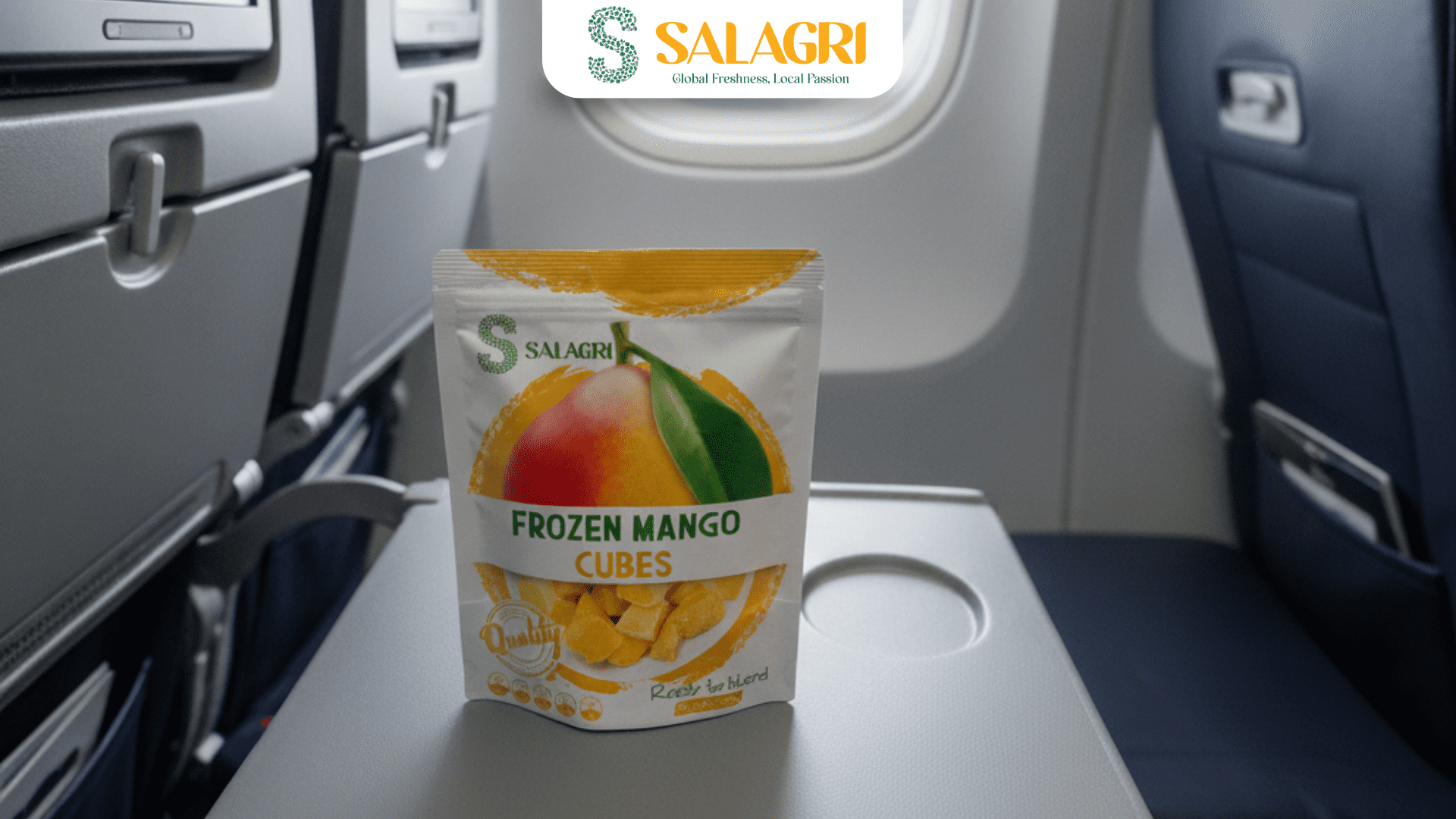
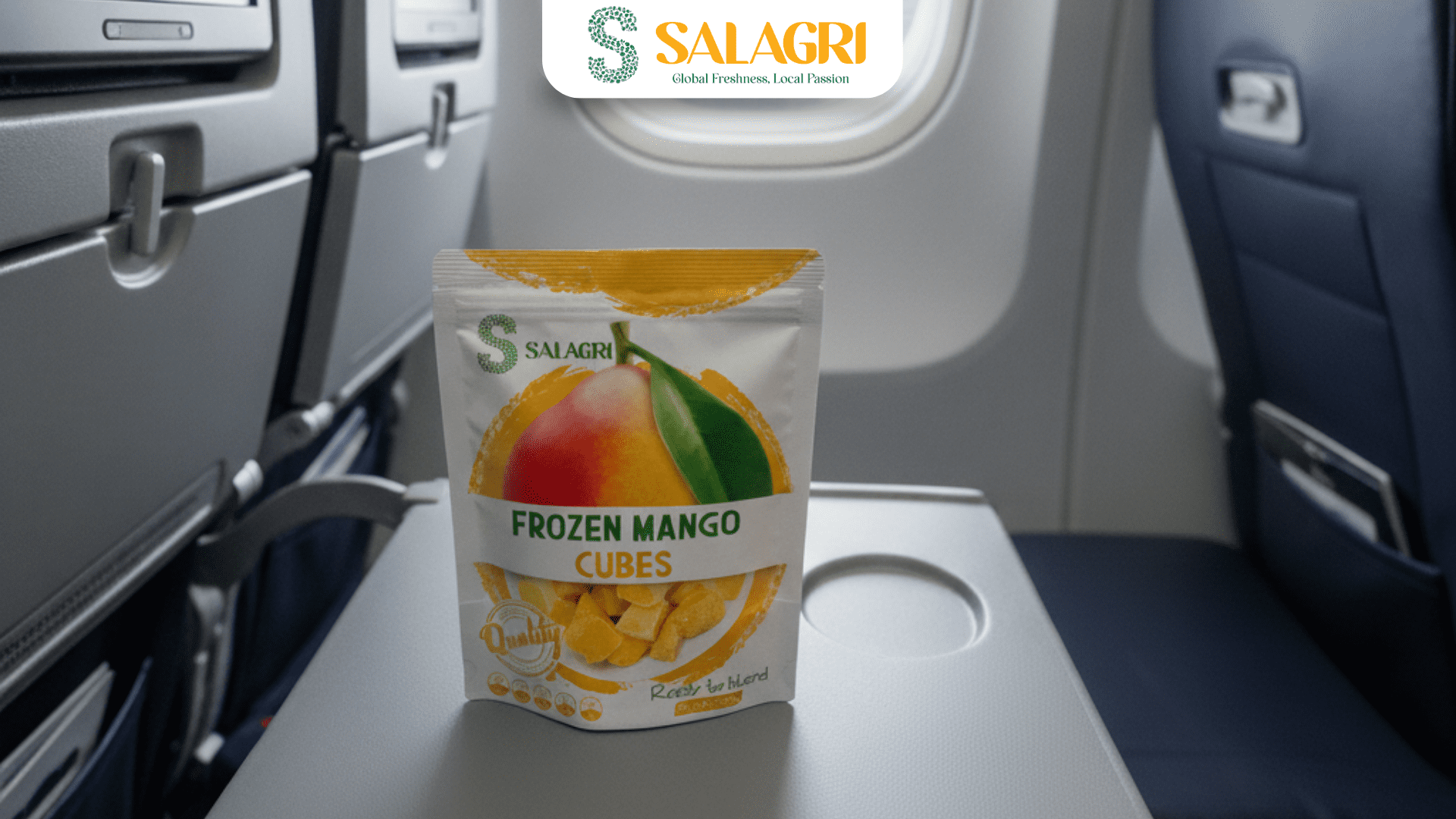

Navigating International Travel with Fruit: Key Tips
To avoid issues with fresh fruit:
- Check Customs Rules: Use the USDA’s APHIS website or the destination country’s agriculture department to confirm restrictions. For example, the EU bans most fresh fruits from non-EU countries.
- Pack Smart: Use clear, leak-proof containers for domestic flights. Avoid juicy fruits like peaches that could leak and attract scrutiny.
- Declare Everything: On international flights, declare any food items at customs, even if you think they’re allowed. Undeclared fruit can lead to confiscation or fines.
- Consider Alternatives: For international travel, pack sealed, processed snacks like dried fruit (e.g., SALAGRI’s dried mango) or granola bars, which face fewer restrictions.
If you’re traveling with kids, baby food (including fruit purees) is exempt from the TSA’s 3-1-1 liquid rule for children under two, but declare it and expect extra screening.
Additional Tips for Traveling with Food
- Domestic Flights: Stick to solid, whole fruits like apples or oranges. Avoid cut fruit unless sealed tightly to prevent leaks.
- International Flights: Skip fresh fruit entirely to avoid customs issues. Opt for sealed snacks or plan to buy frozen fruit like SALAGRI’s at your destination.
- TSA 3-1-1 Rule: Liquids (e.g., fruit purees or smoothies) must be in 3.4 oz (100 ml) containers, fitting in a single quart-sized bag. Frozen items must be thawed to pass as liquids.
- Be Considerate: Avoid strong-smelling fruits like durians to keep fellow passengers happy.
- Check MyTSA App: For U.S. flights, snap a photo of your fruit and ask via the app if it’s allowed.
Why SALAGRI Fruit Is Your Go-To for Frozen Produce
SALAGRI Fruit leads the industry with its commitment to quality and sustainability. Their frozen fruits and vegetables are sourced from Vietnam’s top farms, frozen within hours to lock in freshness. From mango to watermelon, their offerings are free of added sugars and preservatives, making them ideal for healthy smoothies. SALAGRI’s global reach ensures you can order online and have tropical fruits delivered anywhere, ready for your next culinary adventure.



Conclusion: Plan Smart and Savor the Flavor
So, can you bring fresh fruit on a plane? Yes, for domestic U.S. flights, but international travel and certain regions like Hawaii have strict bans. To avoid hassle, consider frozen fruit as a post-travel treat. SALAGRI Fruit’s tropical selections make it easy to whip up smoothies that recharge you after a flight. Order from their online store and enjoy Vietnam’s finest produce wherever you go.



